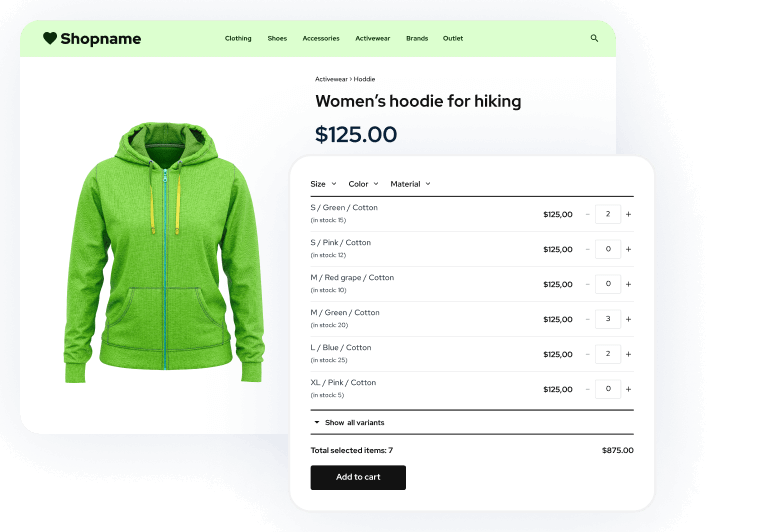
If you have wholesale and retail sales channels based on Shopify, you might want to separate them to prevent customers from placing orders using the incorrect prices. Shopify doesn’t offer such a feature out of the box, so you need to look for another solution. You have the following options:
SOLUTION 1. Use different Shopify stores to divide the channels completely
You can create two completely independent stores on Shopify. In this case, you’ll need to add products with different pricing to both stores. It’s a good choice if you don’t use Shopify for inventory tracking, because you’ll get completely separated platforms and avoid mistakes with prices and orders. If you want to sync inventory across both stores, there are some special apps you can use, but the job may still be difficult and expensive.
Pros of different Shopify stores:
- Stores can be completely separated, and nobody can order products at the wrong price
- You can’t mess up the prices in independent shops
Cons of different Shopify stores:
- An expensive option, because you’ll have to pay for Shopify and all the apps you use twice
- May introduce inventory tracking issues
- It’s confusing to monitor two separate stores.
SOLUTION 2. Use locking app
There are some apps with lockdown functionality in the Shopify app store. These apps may be used to create a wholesale section on your website that won’t be visible to regular customers. This approach also has its own pros and cons.
First of all, lockdown apps may be complicated to set up and configure. In your case, you need pretty basic functionality, so you might consider using an app like EasyLockdown, which is fairly simple and easy to use.
Using this app, you can lock any page you want on your website. But, more importantly, you can lock down collections and products and make them visible to the appropriate groups of users.
This way you can create collections that are made visible to wholesale and retail buyers respectively. You can then hide them from users who shouldn’t have access to that collection. Easy, right?
Pros of using locking app:
- Provides a wide range of settings that allow you to lock any content on your store
- Cheaper than having two Shopify stores
- All information is in one place
Cons of using locking app:
- Inventory tracking issues based on duplicate products
- A monthly fee
- Might be complicated to use.
SOLUTION 3. Use special app for your wholesale items
Some special apps can help you solve the issue and manage your store as a wholesale or retail. They help track inventory and set special prices for some user groups. Usually, such apps create separate pages with products for selected groups of customers. B2B:Wholesale app creates not only a wholesale page with lots of products but also can add bulk order form right on the product page.
Pros of using wholesale app:
- May help to solve the inventory tracking issue
- You can hide some product variants from some customer groups
- All information in one Shopify store.
- Wholesale order form right on the product page.
Cons of using wholesale app::
- Small mothly fee.
- Might be a little bit complicated with the initial setup.

B2B:Wholesale Bulk Order Form
Wholesale order forms: quick order forms on the product pages and standalone bulk order pages.





